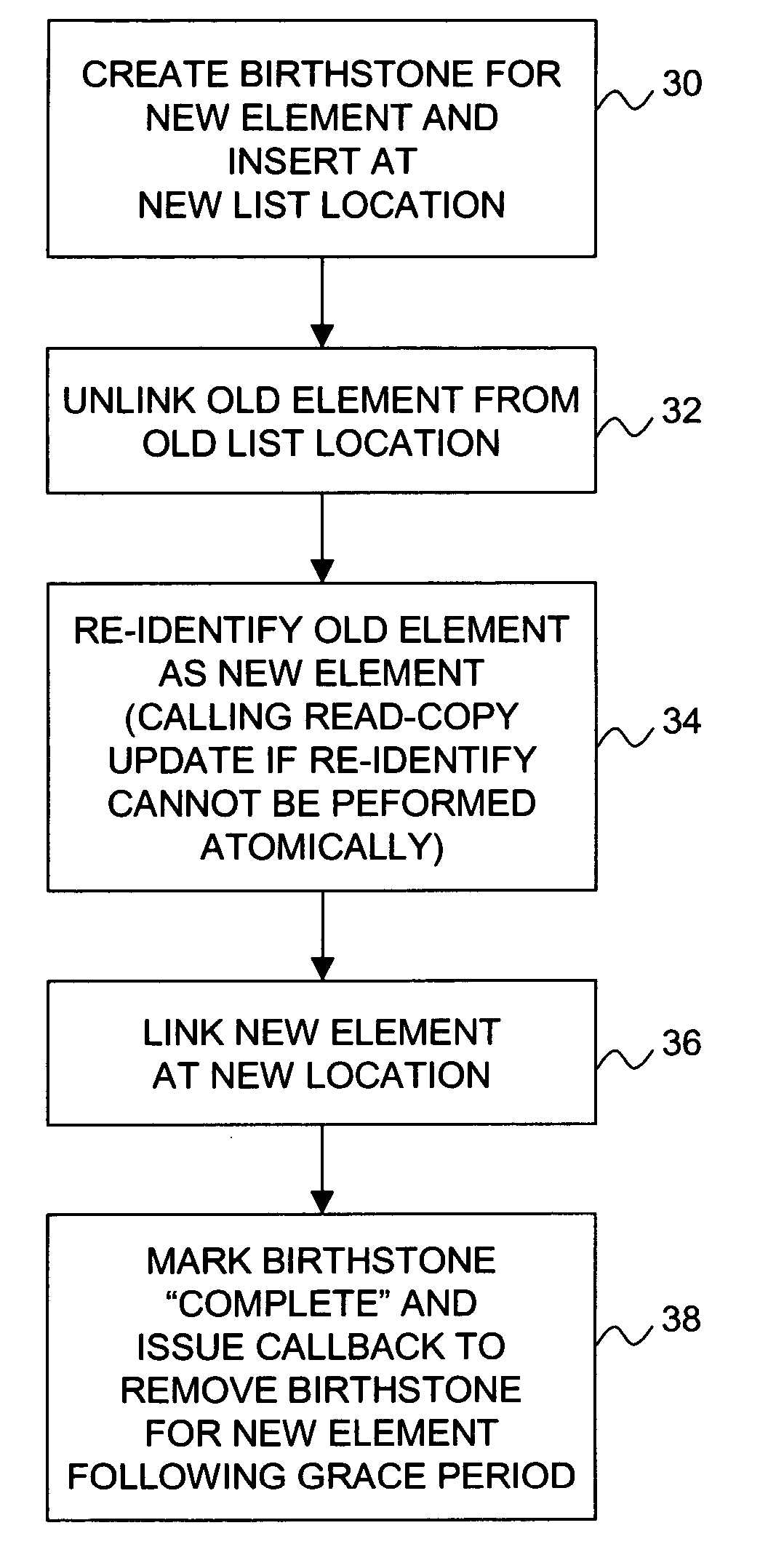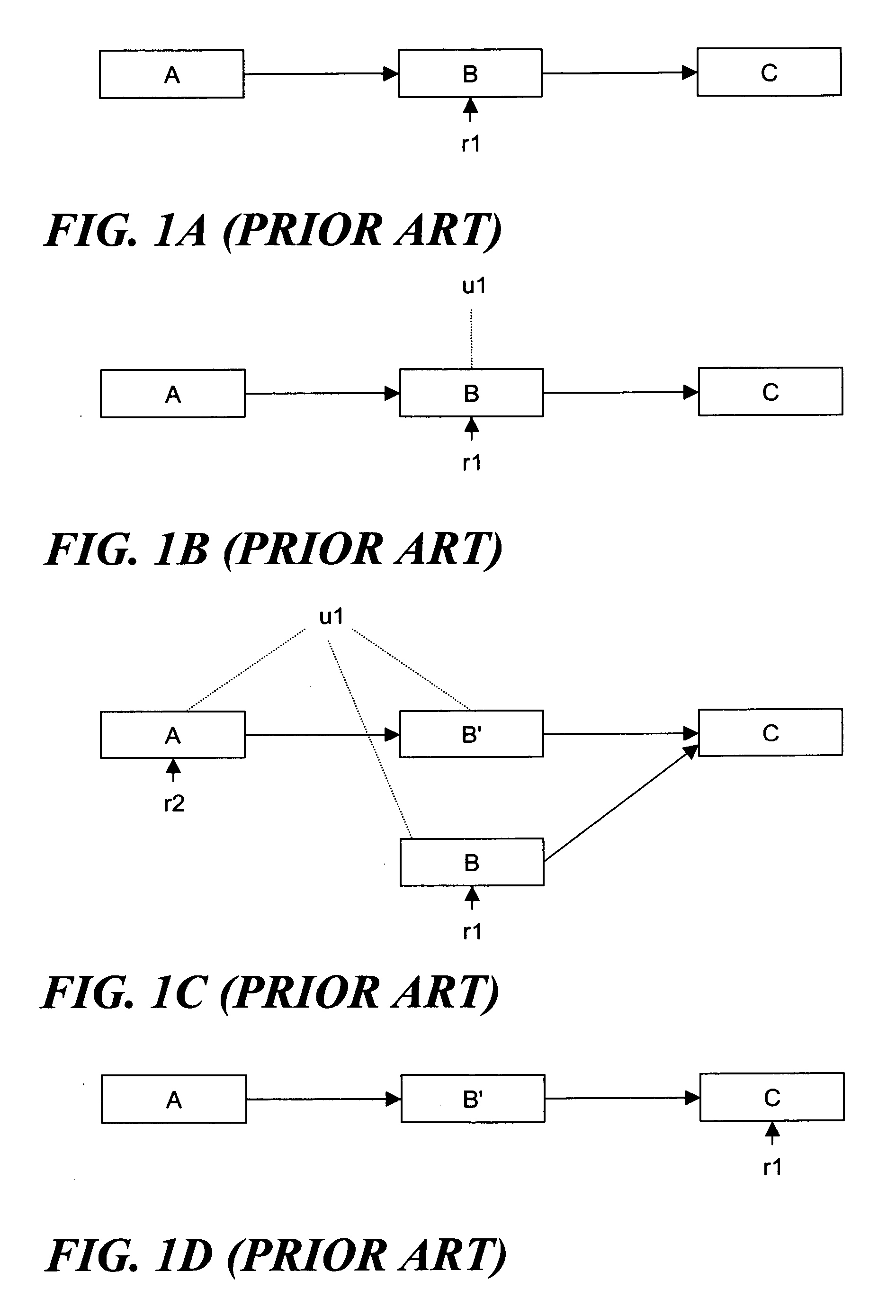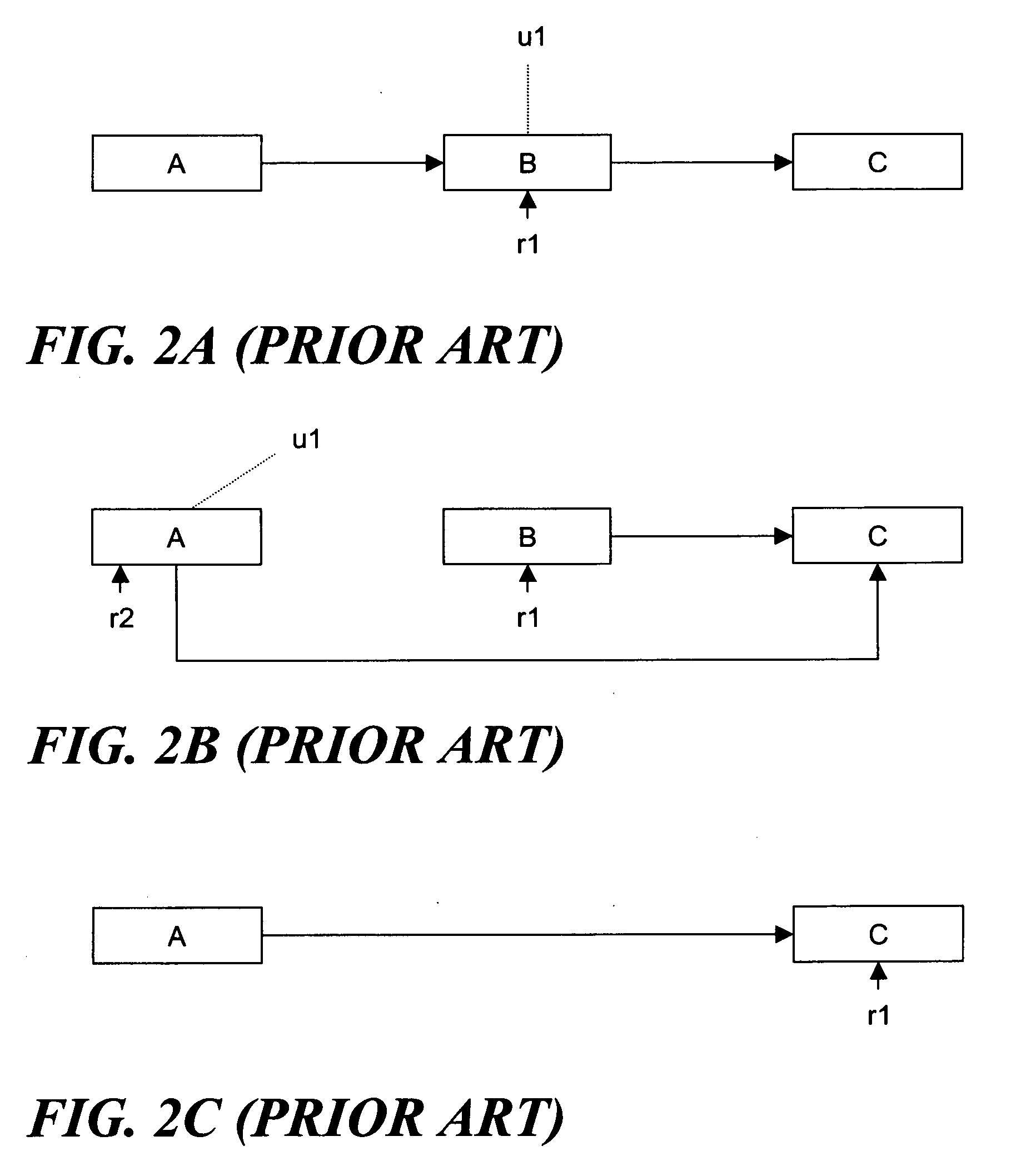Atomically moving list elements between lists using read-copy update
a technology of list elements and read-copy update, applied in the field of computer systems and methods, can solve the problems of requiring duplication of the entire, requiring the subsequent lookup of the old name to fail, and requiring the entire to be renamed
- Summary
- Abstract
- Description
- Claims
- Application Information
AI Technical Summary
Benefits of technology
Problems solved by technology
Method used
Image
Examples
Embodiment Construction
[0031] Before discussing the details of the invention in its exemplary embodiments, it will be helpful to consider several examples illustrating the manner in which conventional read-copy update can be used to update list elements. FIGS. 1A-1D illustrate one such situation wherein a data element B in a group of data elements A, B and C is to be modified. The data elements A, B, and C are arranged in a singly-linked list that is traversed in acyclic fashion, with each element containing a pointer to a next element in the list (or a NULL pointer for the last element) in addition to storing some item of data. A global pointer (not shown) is assumed to point to data element A, the first member of the list.
[0032] It is assumed that the data element list of FIGS. 1A-1D is traversed (without locking) by multiple concurrent readers and occasionally updated by updaters that delete, insert or modify data elements in the list. In FIG. 1A, the data element B is being referenced by a reader r1,...
PUM
 Login to View More
Login to View More Abstract
Description
Claims
Application Information
 Login to View More
Login to View More - R&D
- Intellectual Property
- Life Sciences
- Materials
- Tech Scout
- Unparalleled Data Quality
- Higher Quality Content
- 60% Fewer Hallucinations
Browse by: Latest US Patents, China's latest patents, Technical Efficacy Thesaurus, Application Domain, Technology Topic, Popular Technical Reports.
© 2025 PatSnap. All rights reserved.Legal|Privacy policy|Modern Slavery Act Transparency Statement|Sitemap|About US| Contact US: help@patsnap.com



